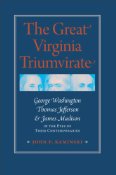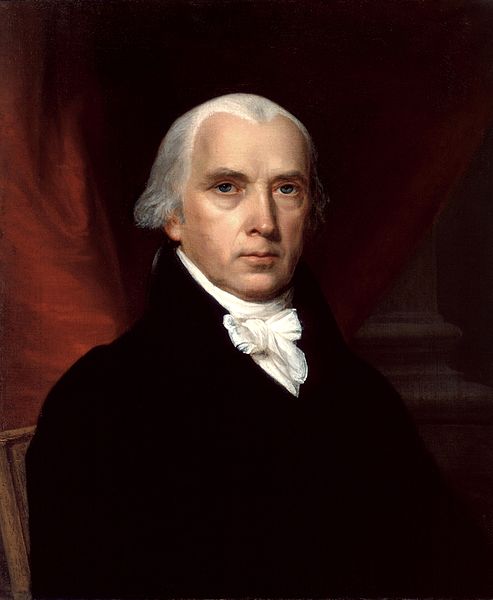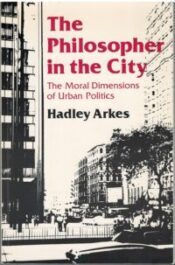
The Great Virginia Triumvirate by John P. Kaminski
 The Great Virginia Triumvirate is 3 brief biographies in one compact volume. It is to be recommended for anyone who wants to get a sense of these three Founders from the viewpoint of some of their contemporaries.
The Great Virginia Triumvirate is 3 brief biographies in one compact volume. It is to be recommended for anyone who wants to get a sense of these three Founders from the viewpoint of some of their contemporaries.
Washington
The first of the triumvirate is of course, Washington. Kaminsky makes the point that Washington decided to pursue greatness. In a mere 80 pages Kaminsky covers a lot of territory. Washington’s role in the French and Indian War with Braddock gave him a reputation and stature that made him the natural choice to lead the Revolutionary army. The young Washington is described by a fellow officer George Mercer:
Straight as an Indian, measuring 6 feet 2 inches in his stockings and weighing 175 pounds. … His frame is padded with well-developed muscles, indicating great strength. His bones and joints are large, as are his hands and feet. He is wide shouldered but has not a deep or round chest; is neat wasted, but is broad across and has rather long legs and arms. His head is wellshaped, though not large, but is gracefully poised on a superb neck. A large and straight rather than a prominent nose; blue grey penetrating eyes which are widely separated and overhung by a heavy brow. His face is long rather than broad, with high round cheek bones, and terminates in a a good firm chin. He has a clear, though rather colorless pale skin which burns with the sun. A pleasing and benevolent though a commanding countenance, dark brown hair which he wears in a cue. His mouth is large and generally firmly closed, but which from time to time discloses some defective teeth. His features are regular and placid with all the muscles of his face under perfect control, though flexible and expressive of deep feeling when moved by emotions. In conversation, he looks you full in the face, is deliberate, deferential, and engaging. His demeanor at all times composed and dignified. His movements and gestures are graceful, his walk majestic, and he is a splendid horseman.
Such is an example of the way in which Kaminsky tells his story of Washington, Jefferson and Madison. He cites letters and observations from the contemporaries of his subjects. He illustrates Washington’s famous physical prowess by citing the oft-repeated anecdote offered by the painter Charles Wilson Peale who visited with Washington in 1773 for the purpose of painting his portrait.
Peal described the leisure activities of some of the young visitors to Mount Vernon as they pitched the bar to see the strongest among them. Suddenly the colonel appeared and asked to be shown the pegs that marked the farthest throws. “Smiling and without putting off his coat,” Washington held out his hand. As soon as the heavy lead weight felt the grasp of his hand, according to Peale, “it lost the power of gravitation, and whizzed through the air, striking the ground far, very far, beyond our utmost limits.” The young men stood astonished as Washington walked away, saying, “When you beat my pitch, young gentlemen, I’ll try again.”
Aside from recounting events and descriptions of Washington by his contemporaries, Kaminsky also ventures into Washington’s religious views. Kaminsky’s depiction of Washington’s religious views are fair and in concurrence with other biographies reviewed at WWTFT.  Washington was very private with respect to religion, but nonetheless felt that its influence on society was essential. He also was convinced that God takes an active role in the affairs of men and had specially blessed the United States. Kaminsky quotes extensively from both Washington’s first inaugural and his farewell address and states:
Washington believed that God smiled upon America and played a crucial role in its development. Heaven had blessed America with a bountiful land, with varied climates, and advantageously located navigable rivers. Never before was a people given “a fairer opportunity for political happiness.” It would be left for the people of America to determine whether or not they should “be completely free and happy.” When America faced uncertainties during the mid 1780’s, Washington continued to have faith in God.
Kaminsky briefly covers Washington’s role at the Constitutional Convention and moves on to his two terms as President. He emphasizes Washington’s cognizance of the precedents he was setting as the first occupant of the office. Kaminsky illustrates how almost everything Washington did was the product of deliberation on the consequences. Washington chose to pursue greatness … and was successful in achieving it.
Jefferson
Kaminsky counts Jefferson as one of the few Renaissance men with whom America has been blessed. He points out that Jefferson’s accomplishments are underscored and accentuated by his mastery of the pen.  Jefferson is credited with authoring The Declaration of Independence, but he is also known for his philosophical bent. The sage of Monticello is an enigma not only to people of the present day but was also so to those of his own time. According to Alexander Hamilton, Jefferson was “a man of sublimated & paradoxical imagination — cherishing notions incompatible with regular and firm government.” He saw Jefferson’s politics as “tinctured with fanaticism” and thought that he was “too much in earnest in his democracy.” Hamilton was not a Jefferson fan. He believed that Jefferson’s persona of the detached philosopher was a ruse. He thought him “a man of profound ambition & violent passions.” Hamilton was not alone in his characterization of Jefferson. The clerk of Albemarle County told George Washington that was “one of the most artful, intriguing, industrious and double-faced politicians in all America.”
But Jefferson had his proponents too. Some, like Margaret Bayard Smith, felt that to know Jefferson was to love Jefferson, saying that it was “impossible, for any one personally to know him & remain his enemy.”
Kaminski evidently falls into the latter camp suggesting that,
… throughout his life his guiding principle was “to do whatever is right, and leave consequences to him who has the disposal of them.” He hoped that his contemporaries and posterity would understand. “The only exact testimony of a man is his actions, leaving the reader to pronounce on them his own judgment.”
Kaminski takes advantage of Jefferson’s “felicity with a pen” as Adams put it, throughout his short biography. Whatever else one might want to say about Jefferson, the man could write. Jefferson demonstrates in expressing his skepticism of human nature and the exercise of power in governance.
… it would be a dangerous delusion were a confidence in the men of our choice to silence our fears for the safety of our rights:Â that confidence is everywhere the parent of despotism — free government is founded in jealousy, and not in confidence; it is jealousy and not confidence which prescribes limited constitutions, to bind down those whom we are obliged to trust with power. … In questions of power, then, let no more be heard of confidence in man, but bind him down from mischief by the chains of the Constitution.
Aside from liberal use of Jefferson’s beautiful writing, Kaminski also lays out the main events in Jefferson’s life, including his role in the Virginia legislature in 1769 where he proposed but failed to get a bill passed which would make it easier for owners to emancipate their slaves. Jefferson owned slaves throughout his life.
In March 1775, Jefferson was added to the Virgina delegation to the Second Continental Congress. It was there in Philadelphia that Jefferson penned the Declaration of Independence that, perhaps more than anything else, cemented his place in American history. Kaminski puts it succinctly:
These five sentences constitute arguably what is the greatest statement in political literature.
Although he borrowed the ideas and even some of the phrases of those who had gone before, Jefferson’s “preference for style and euphony over a rigid adherence to grammar” made him possibly “the most eloquent of all American writers.”
Kaminski breezes through Jefferson’s continual struggle with the issue of slavery and his inability to resolve the issue personally or politically. He explains how Jefferson viewed emancipation as practicable only if a coordinated plan consisting of three parts could be implemented:
- gradual and compensated emancipation in which slave owners would be paid from public funds for their financial loss.
- colonization of free blacks, preferably in Africa, but more likely in some Caribbean island nation
- replacement of the black labor force with a free alternative, most likely Protestant Germans similar to those who had immigrated to Pennsylvania.
Kaminski also touches on the Sally Hemmings affair, and asserts that “with no definitive scientific answer, the controversy continues.” While Jeffersonian DNA is in evidence, it may be that of Randolph Jefferson rather than that of Thomas.
Kaminski covers Jefferson’s role as Secretary of State but does not really go into his hi-jinx with Frenau or his behind-the-back maneuvering against Hamilton and even Washington. Most of what Kaminski relates is more on the positive side of Jefferson. Although Kaminsky does quote Jefferson’s famous justification of means being vindicated by the ends, in defending the atrocities of the French Revolution, “… rather than it should have failed, I would have seen half the earth desolated. Were there but an Adam & Eve left in every country, & left free, it would be better than as it is now.”
In spite of such idealistic rhetoric, it was Jefferson’s practicality that convinced Hamilton to throw his support his way in the presidential election of 1800. Even though he disliked Jefferson, he saw that Jefferson would accept practical political constraints on his idealism. Whereas the “profligate” Burr had no scruples whatsoever.
In describing Jefferson’s presidency Kaminsky paints his tenure in office as largely successful, the apex of which, was of course the Louisiana purchase. However, he does have some interesting things about Jefferson’s struggles with the judiciary that don’t necessarily reflect positively.  According to Chief Justice Marshall,
The great Lama of the Mountains is among the most ambitious, & I suspect among the most unforgiving of men. His great power is over the mass of the people this power is chiefly acquired by professions of democracy. Every check on the wild impulse of the moment is a check on his own power, & he is unfriendly to the source from which it flows. he looks of course, with ill will at an independent judiciary.
Kaminsky points out that Albert Gallatin, Jefferson’s Treasury Secretary, regularly achieved surpluses in his budgets. However, he seems to suggest that Jefferson willingly and pragmatically consented to keep the Bank of the United States functioning, in spite of his distaste for the institution. This is a slightly different take than that of Nicholas Dungan in Gallatin, The Swiss Founding Father, who suggests that Jefferson resisted this every step of the way.
All in all, Jefferson is cast in a fair light and given his due.
James Madison
The last of the biographies in The Virginia Triumvirate, is that of James Madison.
Madison’s biography follows a theme. Kaminski’s thesis is this:
Throughout his long years of service, James Madison worked to defend liberty and justice. Sometimes this required him to emphasize local or state power, sometimes federal power. but he always wanted power to serve the cause of freedom. Thus, in looking at Madison’s defense of liberty and justice from wherever danger appeared, we see a remarkable consistency.
 Kaminski fairly races through Madison’s life as well. In his book Monroe, The Last Founding Father, Harlow Giles Unger provides much more color into Madison’s first congressional race against his friend James Monroe.  However, a scant 68 pages are all that is dedicated to Madison. Consequently, some things are necessarily only cursorily covered.
Kaminski fairly races through Madison’s life as well. In his book Monroe, The Last Founding Father, Harlow Giles Unger provides much more color into Madison’s first congressional race against his friend James Monroe.  However, a scant 68 pages are all that is dedicated to Madison. Consequently, some things are necessarily only cursorily covered.
The man known as the “Father of the Constitution” is given credit for his work at the Constitutional Convention, some of the Federalist Papers, and the Bill of Rights. However, Kaminsky also takes time to delve a little bit into Madison’s position on religion and government. Like Patrick Henry, Madison argued against the state sponsorship of the Anglican Church, or indeed any church.
As with his other subjects, Kaminski is fairly positive in his assessment of Madison. He omits some of Madison’s failings as an executive, in favor of emphasizing the eventual popularity of his presidency. It was a good overview of Madison, but nothing that hadn’t been covered elsewhere. Interestingly enough, Dolly is not really mentioned.
Still, all in all this is an informative, interesting and well-written book. If you’re going to visit Mount Vernon, Monticello, and Montpelier, this is a good book to read before your visit!

 The posts are coming!
The posts are coming!

2 comments
[…] What Would The Founders Think: The Great Virginia Triumvirate by John P. Kaminski […]
[…] WWTFT:Â The Great Virginia Triumvirate […]
Leave a Comment